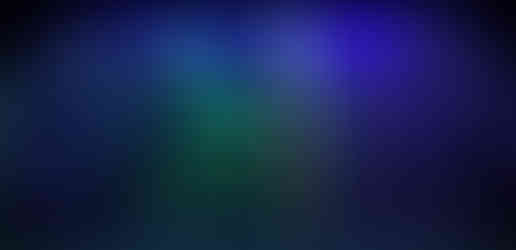Mahtma and the Stone Chariot: 10 Rupees (India, 2018)-Article
- smithwicknumismati
- Dec 4, 2020
- 4 min read
Updated: Apr 14, 2024
This Indian banknote represents the 2nd denomination of the Mahatma Gandhi New Series (2018). The Mahatma Gandhi Series is known for its detailed illustrations of Indian landmarks and its improved security measures. Primary text is in English and Hindi, the reverse features the note's value in 15 additional official Indian languages.
Observe

The observe features a portrait of peace activist Mahtma Ghandi (1869-1948). Who lead a successful campaign against British rule, leading to India's independence. The portrait is based on a famous 1946 photograph of Gandhi meeting, with British Lord Pethick-Lawrence (1871-1961). India gained it's independence the following year, on 15 August 1947. The portrait utilizes the intaglio printing technique. There are 2 tapered serial numbers to the portrait's upper left and lower right.
As a primarily bilingual currency the observe text is written in duplicate. There are 2 instances of duplicate text, the upper right English text mirrors the upper left (written in Hindi). As does the promissory clause, located at the note's center. The only non-duplicate text is along the upper center, it translates to "Ten Rupee".
Toward the right of Ghandi is the Seal of the Reserve Bank of India. Further right is the State Emblem of India. There are 4 additional instances of the note's value, "₹ 10". There is a prominent instance on the watermark area, above the serial number. With one to the immediate left of Ghandi and one vertically above his shoulder. The 4th is printed vertically in Hindi numerals, overlaid on a graph lined circle pack.
At first glance it can be accidently taken to be an allusion to the tantric Sahasrara chakra. Although this is in fact part of an anti-counterfeit measure. Which works in tandem with a vertical "10" light puzzle/registration element, located near lower left corner. The geometry of the circle pack functions as a relative refence point, while the text "₹ १०" text provides its center. An additional vertical "₹ 10" above Ghandi's shoulder provides the final reference point. Allowing the notes to be quickly and reliably verified and registered, by specialized electronic counters. (The background Stupa/Hindu temple is an entirely cosmetic element)
Reverse

The reverse features an illustration of one of the stone chariot wheels, at the Sun Temple of Konark (Konark Surya Mandir). The temple is dedicated to Jagannātha (Lord of the Universe), an avatar of Visnu the Preserver. Besides the illustration is a table written in 15 of India's 22 official languages, declaring the note's 10 Rupee value. The languages present are Assamese, Bengali, Gujarati, Kannada, Kashmiri, Konkani, Malayalam, Marathi, Nepali, Odia, Punjabi, Sanskrit, Tamil, Telugu, and Urdu.
To the left of the language table, are Gandhi's spectacles with Hindi text. This is the logo of Swachh Bharat Abhiyan (SBA) known international by its English name, the Clean India Mission. SBA is a nation-wide sanitation campaign, founded to celebrate 150th year of Ghandi's birth. Prime Minister Modi has compared SBA to Ghandi's Champaran Satyagraha (Champaran (non-violent) Revolution).
The lowermost text translates to "Reserve Bank of India".
Watermark and Additional Security

The watermark features Mahtma Ghandi (observe duplicate) with an electrotyped “10”. The observe features 2 tapered serial numbers, running diagonal of each other (upper-left/lower-right). Large portions of the note employs micro-print patterns. In addition to micro-text, this text includes "RBI" (Royal Bank of India) 'भारत' (India), 'INDIA' and “₹10” declaring the note's 10 Rupee value. These micro-text elements are present on Gandhi's spectacles and collar.
For additional security this note utilizes a windowed security strip, it displays “Rbi‘भारत’ in sequence. The note also features 2 light puzzles/registration elements. A “Sun” element on the observe (far left) interfaces with a “Chariot Wheel” on the reverse (far right). The second is a 2-toned “10” light puzzle, below the before mentioned Sun element. When back lit it displays a vertical "10" with tan (observe) and brown (reverse) horizontal strips.
Ultraviolet light analysis shows a number of luminous fibers. Under regular white light the fibers appear invisable, the fibers are made from recycled cotton. Noted the luminous nature of said fibers, may be incidental. As other banknotes printed on recycled medium then to have this same effect.
Additionally, the note utilizes a number of intentional ultraviolet security measures. The obverse’s portrait of Mahtma Ghandi is entirely luminous green. As are the 2 tapered serial numbers, a vertical "₹ 10" above Ghandi's shoulder, and 2 “sun ray rings” radiating away from the note's sun motif (far left).
The reverse utilizes luminous blue scheme centered around the stone chariot wheel. Above is an angled luminous section, which reads “TEN RUPE”. In addition to 2 step-like patterns below the chariot wheel. The note's windowed security strip shines bright yellow. Making highly recognizable, as it can be easily seen from either side.
Ultraviolet Gallery
Additional Notes
This note's dimensions are 123 mm × 63 mm, making it slightly shorter than it's 137 × 63 mm predecessor. The Mahatma Gandhi (Old) Series ₹10, known for it's depiction of “Indian Beast”. It features a Indian Rhinoceros, Indian Elephant, and Bengal Tiger.
As this currency currently active, this note has been digitally over stamped with text. Similar measure should be taken with other active currency, particular observe elements. As high-grade images of non-specimen notes, can lead to legal repercussions. Dependent on an individual's current jurisdiction.









Comments